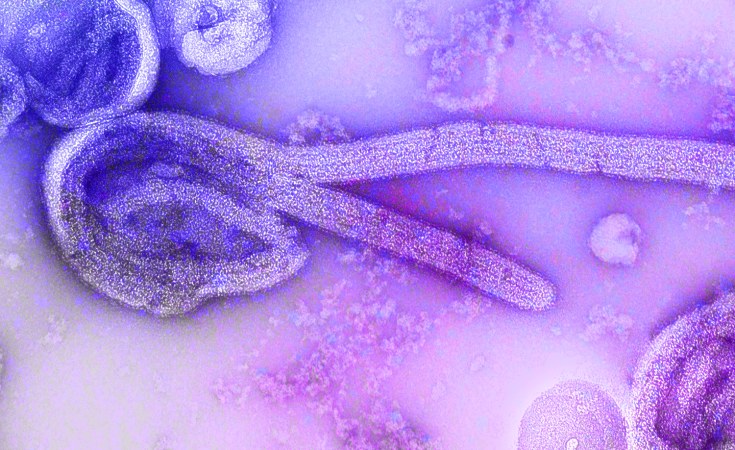Bukoba — Tanzanians including care takers and health attendants should effectively take preventive measures and health infection prevention and control at all time following the confirmation of Marburg Virus Disease in Kagera Region.
Marburg Virus Disease (MVD) is a rare but severe hemorrhagic fever which affects both people and non-human primates. MVD is caused by the Marburg virus, a genetically unique zoonotic (or animal- borne) RNA virus of the filovirus family.
The Minister for Health, Ms Ummy Mwalimu said investigations carried out by the National Laboratory confirmed on the samples from the patients showed it is Marburg virus disease.
She, however, said that there should be no cause for alarm as the disease is manageable and the government can contain it.
"The government has continued to strengthen measures to control further spread of Marburg disease detected in Kagera Region, including employing over 1,300 Community Health Workers (CWS) who will be deployed to the region's villages," she said.
Minister Mwalimu said on Saturday in Kagera Region that to start with the Community Health Workers will be dispatched to Bukoba District Council and Bukoba Municipal Council here, each hamlet being allocated with two CHWs, one for each village and three for each street.
The minister arrived in Kagera on Saturday with the aim of knowing the disease status where she received a report from a team of experts led by Chief Medical Officer Prof Tumaini Nagu which was tasked to monitor the progress of the disease.
"The government has taken swift action by employing a total of 1,322 CHWs who will be dispatched to all villages in the region as part of the efforts to intensify control measures of the disease," she said.
The minister said that the CHWs will be on temporary employment for a period of three months, she said.
Ms Mwalimu said that there is no need to worry because the viral disease is not new. It was reported several times in neighbouring Uganda in 2017, 2014, 2012, and 2007. Democratic Republic of Congo (DRC) from 1998 to 2000, America and Europe.
"There is no cause for alarm. We will collaborate with our neighbours to make sure that those who who will be detected with the disease are given timely treatment," the minister insisted.
She called upon the public to take preventive measures and report individuals with symptoms including fever, headaches and severe bleeding in various open body parts.
Other symptoms include vomiting, diarrhea and dysfunction of the kidney, she said noting that there is no specific treatment for Marburb virus disease but supportive hospital therapy is done on the symptoms.
"The Marburg virus is transmitted from one human to another through direct contact with body fluids from infected persons or contact with equipment and other materials contaminated with infectious blood or tissues, infected blood and body fluids of infected people.
Infection can also occur from animals to human beings in the case a person eats or touches the corpses of infected animals," said Ms Mwalimu.
According to reports from the World Health Organisation (WHO) the disease was first confirmed in Marburg, Germany in 1967. At some point the disease has also been reported in various African and Europen countries.
Chief Medical Officer, Prof Tumaini Nagu, on the other hand, explained that out of the eight confirmed cases five patients died including one worker under the Ministry of Health.
However, three of the reported cases are continuing with treatment as the government continues with contact tracing of 205 individuals within the region, she said.
She explained that the Ministry of Health (MoH) in collaboration with Kagera regional authorities is closely monitoring 205 people who had contacts with eight confirmed cases with Marburg virus disease. They will be under close monitoring for 21 days.
Prof Nagu explained that out of 205 people who had contact with eight confirmed cases with Marburg virus disease 89 were workers under the Ministry of Health while 116 others were community members.
However, she said the viral disease has been contained from further spreading within the reported areas in Bulinda and Butahyaibega villages in Maruku and Kanyangereko Wards in Bukoba Rural District.
Prof Nagu stated that the first patient diagnosed with the disease came from Goziba Island in Lake Victoria and arrived at Bukoba District Council, where he became ill.
Other patients who contracted this disease, she said, included four members of the same family and two health workers. "We insist on health workers following guidelines and procedures to protect themselves from infectious diseases, whether or not they know what the patient is suffering from," she said.
Prof Nagu said that preventive measures include following hand washing guidelines, using sanitizers and avoiding contact with patients who are bleeding, diarhoeic or vomiting.
When you have to attend to a patient with these symptoms, you must wear gloves, she said.
The CMO said for all confirmed patient deaths, the community should work with experts to ensure that those who died of this disease are buried in a dignified but safe manner to prevent further infection.
She called upon community members to join hands with the government to ensure that the contacts are identified and those who need care are given the service earlier enough.


